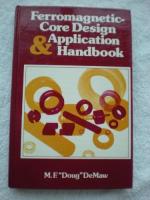|
This section contains 581 words (approx. 2 pages at 300 words per page) |

|
Iron, cobalt, nickel, and various alloys of these materials are called ferromagnetic. Ferromagnetic materials can be permanently magnetized through exposure to an external magnetic field. They are strongly drawn towards a magnetic field. Their magnetic susceptibility, which is a material specific constant that relates applied field and magnetic response linearly, is orders of magnitude stronger than the susceptibility of paramagnetic or diamagnetic materials.
Paramagnetic materials are drawn towards magnets, while diamagnetic materials are repelled. Neither material can become permanently magnetized—or carry a remanent magnetization—and this is independent of temperature for all practical purposes. Their magnetic susceptibility is weakly positive and negative, respectively. The strength of a material's magnetic susceptibility is solely dependent on crystal structure. Paramagnetism usually dominates over diamagnetism. Most rock forming minerals are diamagnetic (e.g., quartz, limestone) or paramagnetic (e.g., micas, amphiboles).
Ferromagnetic behavior is different from diamagnetism and paramagnetism in several...
|
This section contains 581 words (approx. 2 pages at 300 words per page) |

|


